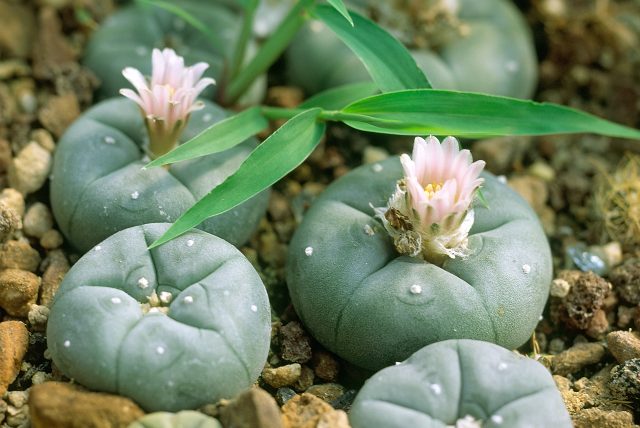
In the late 1800s and early 1900s, mescaline had a real shot at being accepted as a medicinal and therapeutic substance. The psychedelic molecule is most often associated with peyote, the spineless, button-shaped cactus native to Mexico and the Southwestern U.S. that has been used ceremonially by Native Americans for centuries.
And now in the state of Colorado, mescaline is getting a second shot. Even though, according to the Drug Enforcement Administration (DEA), it’s a Schedule I narcotic with “a high potential for abuse, no currently accepted medical use in treatment in the United States, and a lack of accepted safety for use under medical supervision.”
That classification is being challenged by recent research. With the passage of Proposition 122, mescaline was legalized in this state alongside psilocybin, psilocin, DMT, and ibogaine. And by 2026, state-certified clinics will be able to offer mescaline therapy legally.
The first recorded evidence of mescaline use comes from the Inca and Aztecs more than 5,000 years ago. And they weren’t just eating peyote buttons.
Enter: Peruvian Torch (Echonopsis peruviana), Bolivian Torch (Echonopsis boliviana), and San Pedro Cactus (Echonopsis pachanoi). These common — federally legal — cacti are often found in garden stores, nurseries and personal cacti collections. And like their cousin peyote, they are packed with mescaline. San Pedro, Bolivian and Peruvian Torch were the preferred cacti of consumption for the Inca. Their gods were regularly depicted holding cuttings and their priests and shaman would regularly ingest them.
The Aztecs were similarly fond of mescaline. They took peyote as a warrior sacrament, believing it to be a protective plant. The Aztecs accessed it through their northern neighbors, the Huichol Native Americans of Mexico’s western Sierra Madre mountains.
When the Spanish arrived, missionaries tried, unsuccessfully, to stamp out peyote use. In fact, peyote use was unintentionally spread following colonization, as the U.S. government pushed Plains Indians into reservations in the southwestern U.S. where peyote grows naturally, and where other Native tribes already had a history of ceremonial ingestion.
By the mid-1800s, more North American tribes were using peyote than prior to the arrival of European colonizers. By the late 1800s the Native American Church (NAC) was founded. Its members are still protected by the Constitution to use peyote for spiritual practices. Today the NAC has more than 230,000 members spanning geography, reservations and tribes.
Around the same time as the founding of the NAC, pharmaceutical companies and researchers started to take an interest in mescaline. In 1893, Parke-Davis drug company began offering a peyote tincture as a respiratory stimulant and heart tonic. Two decades later, pharmacologists in New York City ran a trial investigating whether the drug could offer insight into schizophrenia. In 1919, German pharmaceutical company Merck started marketing it.
Then came World War II and research motivations changed. Nazi physician Kurt Plötner (later recruited by the CIA for MK-Ultra) experimented with mescaline on concentration camp prisoners as a “truth serum.”
By the 1970s, mescaline was being actively persecuted by the U.S. government’s new “war on drugs.”
However, research published in the journal SAGE Chronicle in 2021 surveyed 452 respondents on their experiences with mescaline and concluded that it “may produce a psychedelic experience that is associated with the spiritual significance and improvements in the mental health with low potential for abuse.”
Another study published in 2021found that “naturalistic use of mescaline is associated with … psychiatric improvements and enduring positive life changes.”
Where the history of this distinctly American psychedelic goes now is largely up to us, here in Colorado. Several other states, counties, and municipalities across the U.S. have legalized or decriminalized mescaline possession. But Colorado is the only one slated to certify mescaline clinics to administer state-sanctioned psychedelic-assisted therapy.














